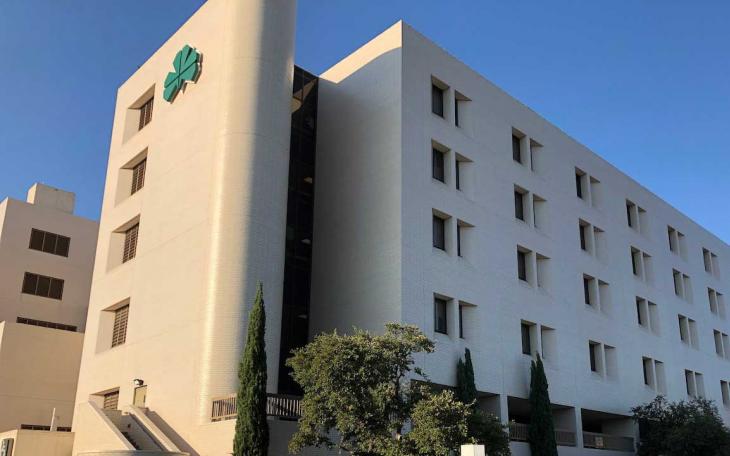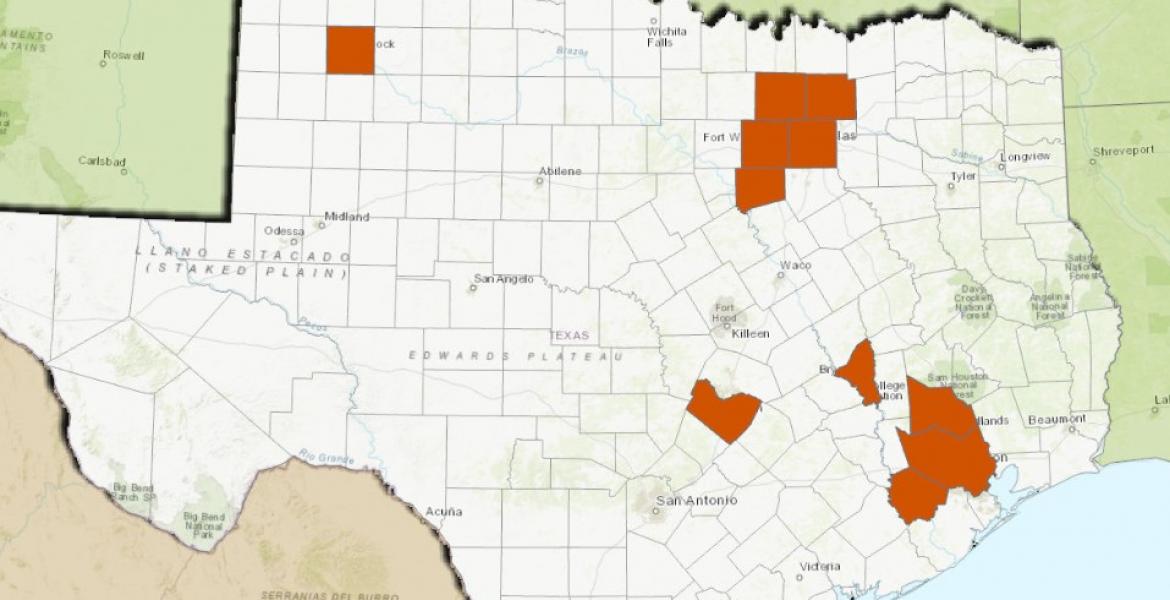Myasthenia Gravis (MG) is a chronic autoimmune neuromuscular disease, and June is MG awareness month. During the month of June, survivors and people battling this disease want to spread awareness about MG and find a cure
Keelie Brydson, from Pflugerville, Texas, has had a personal battle with this disease, and has managed to beat the odds put against her. With this autoimmune disease, her body began attacking itself. The most basic way to explain is MG caused her body to make antibodies that worked against her own nerves and muscles.
Keelie has two forms of Myasthenia Gravis, regular and ocular. MG in general is a rare disease that is characterized by varying degrees of weakness of skeletal (voluntary) muscles of the body. This weakness tends to increase during periods of activity and improves after periods of rest. Ocular MG is a form of MG in which the muscles that move the eyes and control the eyelids are easily fatigued and weakened.
After many doctor's visits, at 14 years old, Keelie was diagnosed with MG, although the battle began much earlier than that. Beginning in fourth grade, Keelie’s family knew that something was wrong.
Keelie explained how the disease started to affect her. She said, “At the beginning of my freshman year [in high school], I started noticing that I was slower in my reactions, but when I was younger, my eyelid would be really droopy and I knew that something wasn’t right.”

Melissa Brydson, Keelie’s mother, said, “When [Keelie] was first diagnosed, we were told it was terminal. So we were told that we would lose her and that she would never graduate high school.”
After her diagnosis, Keelie was filled with many emotions. “I was mad for a long time. I already had ADHD and Thyroidism, so it was just another thing to add to the list” she explained. “After, I was scared for a while, but I think the biggest feeling I had was anger. I was angry all the time and couldn’t understand why I had it.”
It is natural to feel anger about a disease that has taken control of her life, but Keelie said she was not the only one who was consumed by emotions in her family. MG took its own type of toll on her mother and brother Westin.
Keelie explained what she saw her disease doing to the people she loved. She said, “My mom went through some anger for a while. Every once and a while she would just start crying, or blow up about little things.”
For Westin, he was affected differently. Keelie said, “My brother is still affected. [When I was diagnosed], he went into severe depression and stayed angry all the time. [Even now], he still has anger from what happened with me.”
Wayne Brydson, Keelie’s father worked in Fredericksburg and would make the commute to work there. After the diagnosis, Wayne came home much more and gave her the support that she needed.
After being diagnosed, Keelie had to begin treatments right away due to how quickly she was deteriorating. Her deterioration was so severe that the doctors told Melissa that Keelie would be in a wheelchair within six months.
The first step to her hopeful recovery was putting Keelie on Prednisone. Prednisone was used to try and help slow down her MG from progressing. Sadly, she wasn’t improving; she was only getting worse. Next, Keelie was put on another medication, Mestinon, which was prescribed to help improve Keelie’s muscle strength. Again, the medication didn’t work and Keelie was still deteriorating.
The third step in her process was a procedure called plasmapheresis. Plasmapheresis is the removal of plasma from the body. T-cells and antibodies are carried within the plasma, and that is what was killing Kellie. The plasmapheresis was introduced to help make Keelie stronger for her first big surgery that she would have, a thymectomy.

As the plasma from Keelie’s body was extracted, new synthetic plasma was being introduced into her body. This procedure was done every seven to ten days for six months. Additionally, the only machines capable of doing a treatment like this were only located in Houston, Texas, almost four hours away from the family.
After the six months of continuously being hooked up to machines, Keelie was ready for her thymectomy. A thymectomy is the removal of the thymus gland from the body. Melissa presented the idea of the thymectomy. Unfortunately, she was told that they were going to lose Keelie either way. “So we had to make the decision, whether we do the surgery with the possibility of losing her, or just continue to let her deteriorate, knowing we would lose her anyway,” Melissa explained.
[[{"fid":"21583","view_mode":"default","type":"media","attributes":{"alt":"Keelie Brydson After Thymectomy Procedure","class":"media-element file-default imgbody"}}]]
The thymus gland has been known to play a role in MG. The Thymus Gland lies in the chest area beneath breastbone. The thymus plays a very important role in the development of the immune system in early life, its cells for a part of the body's normal immune system.
Thankfully, Keelie’s thymectomy was a success. Her thymus was successfully removed and all of her T-cells were scrapped. The expected recovery time was three months. Unfortunately, the Brydson family was hit with another road block.

After her surgery, Keelie became allergic to all pain medication that she was given. Not being able to take pain medication caused her to not heal as quickly. Keelie described that, “I felt all of the pain and was under constant stress.”
Now, without an active immune system, Keelie couldn’t go to school for an entire semester, but that did not slow down her education. Every other day of the week, a teacher from her high school would come to her house and give her lessons that she was missing.
Once healed from the thymectomy, the last batch of surgeries came. Keelie underwent three ocular surgeries within months of each other to repair the sight in her right eye.
Her ocular MG caused her right eyelid to droop so far that it crushed her cornea, making her legally blind. However, the surgeries were very successful in raising her eyelid and repairing her sight.
Now, Keelie is 19 years old and living her life. She was accepted to Texas A&M University and is a sophomore there. Keelie is attending A&M to become an Ocular Plastic Surgeon. She wants to go to third world countries and give the gift of eyesight to children who need it.

Keelie said, “The ocular plastic surgery was probably the coolest surgery I went through. I laid down on the table, had my eyes closed and literally talked to my surgeon through the entire thing. Twenty minutes later, he would ask me what my favorite color is and if I want that color stitches.”
Even though Keelie has improved dramatically, she still faces challenges every day. Keelie said, “I have had days where I just have to lay in bed all day. I physically can’t out of bed, or I feel horrible because I notice that I am getting weaker. I can notice that something isn’t right in my breathing and swallowing.”
Due to her thymectomy, Keelie will be on Prednisone for the rest of her life. Since MG is so rare, if Keelie ever gets dangerously ill and must go to the emergency room, she has to carry a card with her that lists her medication so the doctors will know how to treat her.
For Keelie, some days are better than others.
Melissa said, “We’re happy that she is still here. It is also frustrating and it’s also difficult to live with the fact that her quality of life is different. She can’t do so many things that she used to.”
Melissa wants people to know that just because the disease is not well known, doesn’t mean that someone doesn’t have an illness that is terminal.

This is the story of Keelie Brydson and how she beat the odds against a terminal disease, but she knows that not everyone is as lucky as she is. Myasthenia Gravis is a rare and misunderstood disease, and the month of June is the time to bring awareness in hopes of finding a cure. People interested in raising awareness can wear teal.
Subscribe to the LIVE! Daily
Required






Comments
Listed By: Penelope Trojcak
I had no idea this disease existed. Thank you for sharing that story! My heart goes out to Keelie and her family for the battles they've had to endure. I hope and pray that one day she can have the quality of life that she so very much deserves!
- Log in or register to post comments
PermalinkThanks for the story Stephanie! When my grandfather had MG in the late 70's we were told that the disease mainly affected young women. He lay speechless for days at St Johns where the nurses assumed he was dying.
I couldn't accept it - he was building fence just a few days before. I chanced to meet Doctors Marsh and LeGrand on the elevator one day and related my frustration. Dr. LeGrand came by Granddad's room later and injected him with Tensilon whereupon my grandfather began to speak immediately. I was just awe-struck and so very thankful. My grandfather wasn't even his patient. Just being on an elevator with two generous doctors had saved his life.
Over the years, we connected with a few other MG patients via a support group but my grandfather was always the only male.
- Log in or register to post comments
PermalinkPost a comment to this article here: